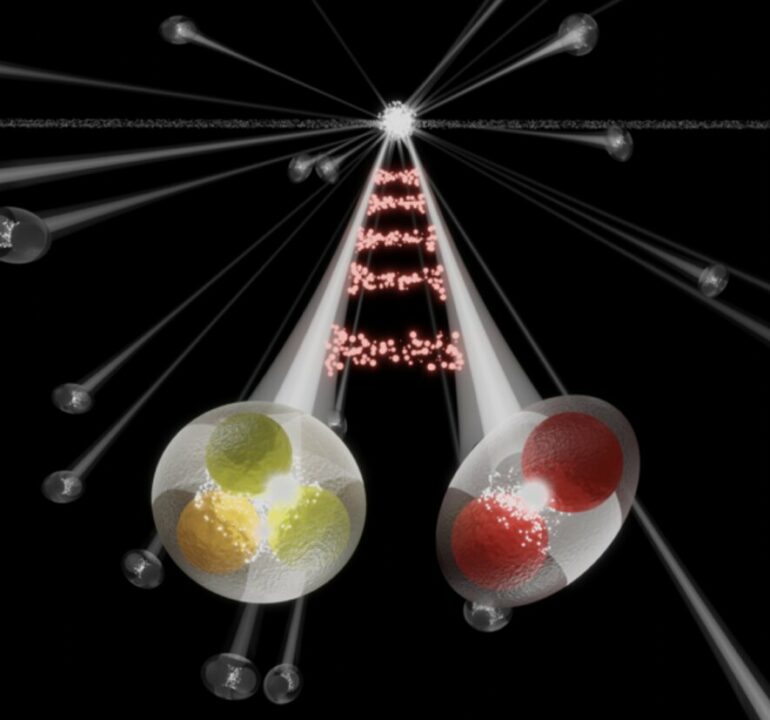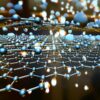In a recently published article in Physical Review Letters, the ALICE collaboration has used a method called femtoscopy to study the residual interaction between two-quark and three-quark particles. Through this measurement, an interaction between the ɸ meson (strange-antistrange quarks) and a proton (two up and one down quarks) was unveiled for the first time.
Since the ɸ meson is not electrically charged, an interaction between the proton and the ɸ cannot be of electromagnetic origin and can only be attributed to the residual strong interaction. The strong interaction is what holds together quarks inside hadrons (like the proton and the ɸ meson), while the residual strong interaction is the force that acts between hadrons. This is the interaction that holds protons and neutrons together in the form of atomic nuclei.
But unlike the residual strong interaction between protons and neutrons, that can be studied in stable bound states like the nuclei, the interaction between unstable hadrons produced in particle collisions is very difficult to observe. It was found to be possible in the LHC using an approach called femtoscopy. Hadrons in the LHC collisions are produced very close to each other, at distances of about 10-15 m (femtometre, hence the name femtoscopy). This scale matches the range of the residual strong force, giving them a brief chance to interact before flying away. As a result, pairs of hadrons that experience an attractive interaction will move slightly closer to each other, while for a repulsive interaction, the contrary occurs. Both effects can be clearly observed through detailed analysis of the measured relative velocities of the particles.
The knowledge of the p-ɸ (proton-ɸ meson) interaction is of twofold interest in nuclear physics. First, this interaction is an anchor point for searches of the partial restoration of chiral symmetry. The left- and right-handed (chiral) symmetry that characterizes the strong interaction is found to be broken in nature and this effect is responsible for the much larger mass of hadrons, like the proton and neutron, with respect to the masses of the quarks that constitute them. Hence, chiral symmetry is connected to the origin of mass itself! A possible way to search for restoration of chiral symmetry and shed light on the mechanism that generates mass is by studying modifications of the properties of ɸ mesons within dense nuclear matter formed in collisions at the LHC. However, for this purpose, it is essential that the simple two body p-ɸ interaction in vacuum is understood first.
The second point of interest is that, due to its strange-antistrange quark content, the ɸ meson is regarded as a possible vehicle of the interaction among baryons (hadrons consisting of three quarks) that contain one or more strange quarks, called hyperons (Y). Depending on the strength of this interaction, hyperons may form the core of neutron stars, among the densest and least understood astrophysical objects. Direct measurement of the Y-ɸ interaction strength although feasible has not yet been carried out, but already today this quantity can be related to the p-ɸ findings via fundamental symmetries. Therefore, measuring p-ɸ interaction provides indirect access to the Y-Y interaction in neutron stars.
The moderate interaction strength measured by ALICE provides a quantitative reference for further studies of the ɸ properties within the nuclear medium and also translates into a negligible interaction among hyperons in neutron stars. More accurate measurements will follow during the upcoming LHC Run 3 and Run 4 allowing to significantly improve the precision of the extracted parameters and also to pin down the Y-ɸ interaction directly.
More information:
S. Acharya et al, Experimental Evidence for an Attractive p−ϕ Interaction, Physical Review Letters (2021). DOI: 10.1103/PhysRevLett.127.172301
Citation:
The next step in understanding the interaction among hadrons (2021, November 17)



